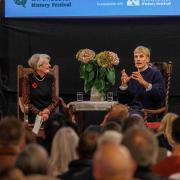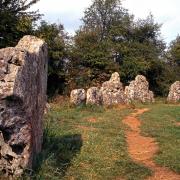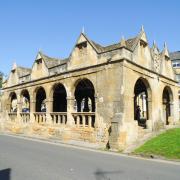It may be winter, but thoughts of wildflower-rich meadows alive with spring and summer colour can give plenty to look forward to: speckly red salad burnet, oxeye daisies, yellow clusters of kidney vetch and lady’s bedstraw with its honeyed scent. Who doesn’t feel their spirits rise?
Welcome news also comes in the shape of a recently launched grassland restoration project, which is set to help make such scenes a greater reality around the Cotswolds.
The project, funded through National Highways Designated Funds, aims to create new, and restore existing, wildflower grasslands, boosting biodiversity and supporting wildlife and nature recovery in the Cotswolds, says Lorna Baggett, programme officer for Cotswolds National Landscape (CNL).

CNL’s Glorious Cotswold Grasslands activities have already resulted in the restoration of some 300 hectares of species-rich grassland since 2019, and with the help of the new initiative it is planned to create or restore another 120ha of wildflower-rich grasslands by 2025.
Landowners with grassland in need of restoration between 1 and 7 hectares in size are invited to get in touch and be involved in making it happen, with guaranteed annual management payments to support them over the next 30 years to ensure sites fully establish.
‘It will take effort and time, but it is really exciting to know that you will be creating a long-lasting legacy,’ Lorna says.
SOWING LOCAL SEEDS
‘It is all about reversing the trend of loss we have seen,’ Lorna continues. In the 1930s, 40% of the Cotswolds National Landscape was covered by wildflower-rich limestone grasslands, but as a consequence of agricultural intensification and changing land management practices this has been reduced to less than 1.5% today.
‘Limestone grassland is a type of habitat that supports so much wildlife from rare wildflowers to insects and all the way up the chain to birds and mammals. It is really important to bring it back,’ Lorna says.
How does the new project work? Grassland with potential to be restored could include sites that aren’t farmed due to low fertility or pasture that is being grazed, Lorna says. Locations are being sought throughout the Cotswolds National Landscape, and within the Cotswolds and Tewkesbury local planning authorities.
‘All the upfront work on the project is funded,’ Lorna explains. This includes an initial visit to the site to discuss possibilities, and carrying out a baseline botanical survey before preparation of the ground for wildflower seed sowing, usually in September/October. Lorna underlines that all of the wildflower seed used has been collected by the Glorious Cotswold Grasslands (GCG) team from local existing donor meadows:

‘That helps to protect the genetics of the wildflowers and the local provenance means they should take well [on the recipient site] because of similar soil types and conditions. We look at the characteristics of sites and match them up.’
A management plan is agreed with the owner of the restoration site, which typically involves timely grazing and / or taking a hay-cut towards the end of summer.
‘Taking the hay-cut away prevents nutrients from going back into the ground. Wildflower species need a low-nutrient environment, free of competition from other species and tough grasses,’ Lorna says, adding that grazing can take place through autumn and winter, and again in spring, but not in summer: ‘to allow the wildflowers to bloom, support insects and pollinators, and then go to seed and perpetuate the grassland.’
If a landowner is not set up with their own animals and machinery, the GCG team can help to put them in touch with contractors.
Landowners who sign up to the project are given guaranteed annual management payments starting at £311/ha and rising to £427/ha over 30 years – the period for calcareous wildflower grassland to be considered as fully established. While the commitment is a lengthy one, Lorna says there is flexibility to opt out of the payments if another, more profitable financing option becomes available for continuing the grassland management plan.

HABITAT RICHES
‘The Cotswolds National Landscape team will be there for the length of the project supporting landowners,’ Lorna says. There will be free conservation advisory visits and botanical surveys every 2–5 years, and if needs be, fully funded further over-seeding.
‘It is really exciting to be involved in a project that will give the grassland enough time to get properly established, increasing botanical diversity and with the potential to create lasting habitat with so many benefits. We can bring back lots of wildflowers including rare plants that not only look beautiful but also support [a chain of] pollinators, invertebrates, mammals, farmland birds and raptors, and improve the overall richness of the land.
‘Having a wildflower meadow providing a nectar source for pollinators also benefits nearby arable crops, and wildflower meadows can act as buffers for farmed areas, by capturing run-off, and reducing soil erosion and flooding. They are also a massive carbon store because they are undisturbed habitat.
‘Sowing the seeds and watching the progress of the grasslands, and bolstering the network of limestone grasslands across the Cotswolds, will be rewarding on so many levels.’
FIND OUT MORE
Do you have grassland in need of restoration between 1 and 7 hectares in size and want to find out more about this project? Email Lorna Baggett, Programme Officer, lorna.baggett@cotswolds-nl.org.uk



























